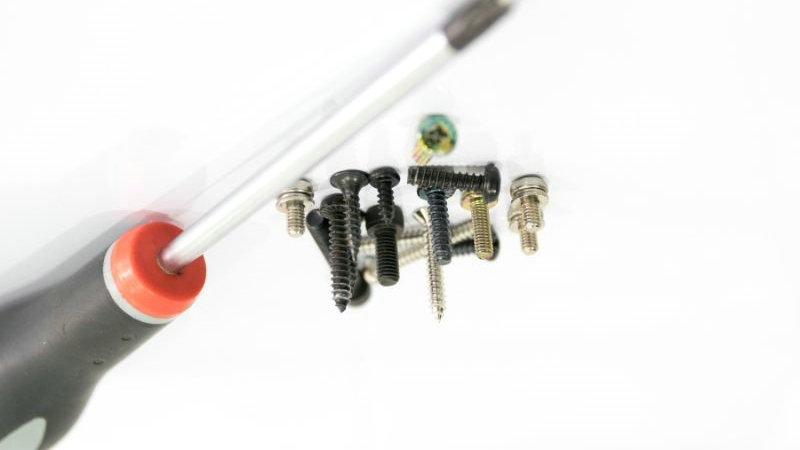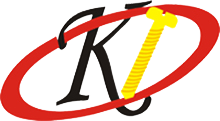Screws are one of the most common and versatile fasteners used in construction, manufacturing, and everyday life. However, there are many different types of screws designed for specific applications. Two of the most widely used varieties are wood screws and machine screws, but their differences are often misunderstood.
Wood screws and machine screws may appear similar at first glance, but they serve very different purposes. Knowing which type of screw to use is crucial for ensuring a secure and durable connection. This article aims to provide clarity on the key distinctions between wood screws and machine screws.
What is Wood Screws

Wood screws have specific threads which reflect the grooves designed to grip the fibers within the wood. These threads are generally sharper and coarser than machine screws which helps them anchor better in softer materials like wood.
Another important aspect of wood screws is their shank. Wood screws typically have a tapered or partially threaded shank. The tapered design allows for a smoother entry and minimizes the chances of splitting the wood when being driven.
The Thread Type and Head of Wood Screw
The threads on the wood screws are spaced further apart. Furthermore, a wood screw has an unthreaded shank section which makes it tightly fit the wood.
Wood screws are available in various head types, including:
- Flat Head: The type of screw head has a flat top and can tapered underside that allows it to sit flush or countersunk into the material surface.
- Oval Head: Oval head screws have a decorative rounded top that rises above the surface. Common applications include switch plates/coverings, furniture, and decorative metalwork.
- Round Head: Round head screws are the decorative domed top that rises above the surface. This makes them suitable when some protrusion is permitted and an aesthetic finish is desired.
- Pan Head: Pan head screws have aesthetic and functional advantages from their wide, flat underside and smoothly rounded top.
Despite the higher cost of wood screws compared to other screw types, they’re worth the investment. Specialized wood screws provide better holding power due to their designed features, making them ideal for woodworking projects.
Understanding Machine Screws

Machine screws are metal screws designed to fasten various components together, usually in machinery or metal applications. They have a cylindrical shaft and are typically made from different types of metals, such as stainless steel, carbon steel, and other durable alloys.
Machine screws have straight threads and flat tips, which means they require a pre-drilled hole. The thread type varies, from fine to coarse pitches, allowing for different levels of holding power. The pitch is the distance between threads, and finer threads offer increased holding strength in certain materials.
One important feature of machine screws is their fully threaded shanks. This means these screws can be completely threaded from the screw’s head down to the tip, allowing them to grip the attaching material more securely. You’ll often need to pair your machine screw with a nut or other threaded component to secure the connection.
Some machine screws can be self-tapping, which means they can create their threads in certain materials, such as sheet metal, as you fasten them. However, it’s always advisable to start with a pre-drilled hole to avoid splitting or damaging the material you’re working with.
Key Futures Between Wood Screw and Machine Screw
Comparing Screw Strengths

Wood Screws are typically made of softer metals such as brass, bronze, or copper. These screws have a tapered shaft and sharp threads designed to grip and secure wood materials without splitting them. The shank (slim body) of a wood screw tapers toward the tip, allowing it to self-drill into the wood. However, using pilot holes can provide additional benefits.
Machine Screws, on the other hand, are made from harder metals like steel, stainless steel, or sometimes aluminum. They have a cylindrical shaft with finely threaded lines that run almost the entire length. These screws are specially designed for fastening metal or plastic components together, often in conjunction with nuts or tapped holes.
Remember that the strength of a screw also depends on its size, which is determined by the gauge, length, and dimensions. When selecting a wood screw, consider the thickness of the materials you’re attaching.
To help you visualize the difference, here’s a brief table
Difference between wood screws and machine screws
| Feature | Wood Screws | Machine Screws |
|---|---|---|
| Threads | Wood screws have coarser, wider spaced threads to grip softer wooden materials without cracking them. The threads typically only extend partially down the shank. | Machine screws have finer, more closely spaced threads designed to fasten metal parts. The threads cover the entire screw shank. |
| Tip Design | Wood screws have a sharp, tapered tip to easily penetrate and drill into wood. | Machine screws have a blunt tip and are not self-drilling |
| Shank | Wood screws often have an unthreaded shank below the head which allows the screw to stop turning when the threads run out, preventing over-tightening. | Machine screws are fully threaded over the entire shank length. |
| Strength | Wood screws grip better in wood without cracking it. | Machine screws form stronger threaded connections in metal than wood screws. |
| Uses | Wood screws are designed for fastening wood, lumber, plywood, etc. | Machine screws are designed for fastening metal parts, sheet metal, machine parts, etc, |
In summary, the differing thread design, tip shape, shank style, strength properties, and intended materials make wood screws and machine screws suited for different specific applications. But they serve a similar fastening purpose through threaded turning and clamping force.
Application Differences Of Wood Screw and Machine Screw
Applications for wood screws:
- Assembling furniture
- Joining wooden frames
- Attaching wooden trim
- Fastening decks and other outdoor structures
Typical machine screw application areas:
- Electrical components
- Metalworking projects
- Light fixtures
- Automotive parts
In conclusion, wood screws have sharp threads and larger thread pitches that allow them to efficiently grip materials without splitting. Their sharp threads also prevent wood fibers from clogging the threads during installation. Machine screws, on the other hand, have finer threads that form a tight fit within mach parts and prevent loosening over time and use Understanding the key screws and machine screws is for selecting the right screw for the job. Whether fastening wood projects or assembling mechanical parts, choosing the screw-type material being joined will help ensure a strong, durable connection.
Frequently Asked Questions
What are the main differences between wood screws and machine screws?
Wood screws and machine screws differ in their design and purpose. Wood screws have sharp tips and coarser threads, allowing for easy penetration into wooden materials without splitting. They often come with flatheads and can be self-drilled. On the other hand, machine screws have straight threads, flat tips, and usually require pilot holes. They are fully threaded and are commonly used with nuts, designed for fastening metal parts together or attaching them to existing tapped holes.
Can I use machine screws for wood applications?
While it’s possible to use machine screws for wood applications, it’s not recommended due to their difference in design and purpose. Wood screws are specifically designed to provide excellent holding power and prevent splitting or stripping of wooden materials. Using machine screws on wood might compromise the strength and integrity of the connection.
Is it possible to use wood screws on metal?
Using wood screws on metal is generally not advised. Wood screws have coarser threads designed for wood, and their sharp tips can’t penetrate metal surfaces effectively. If attaching wood to metal, consider using specialized screws or other suitable fasteners designed for that purpose.
What are the best uses for sheet metal screws?
Sheet metal screws are designed for fastening thin metal materials together or attaching metal objects to other materials, such as wood or plastic. They have sharp, self-tapping threads for easy penetration into sheet metal without requiring a pilot hole. Typical applications include metal ductwork, automotive repairs, and metal fabrication.
How do self-tapping screws work in wood?
Self-tapping screws, including wood screws, have sharp cutting edges that enable them to create or “tap” their own threads as they are driven into the material. This makes them well-suited for applications where drilling pilot holes would be difficult or time-consuming. However, it’s essential to choose the right size and type of self-tapping screws for your specific application to avoid damaging the wood or compromising the connection’s strength.
Are there specialized screws for attaching wood to metal?
Yes, there are specialized screws for attaching wood to metal, sometimes referred to as hybrid or dual-purpose screws. These screws combine features of wood and machine screws, allowing them to bite into both wood and metal efficiently. When joining wood to metal, choosing the appropriate specialized screws can help ensure a strong and secure connection.
